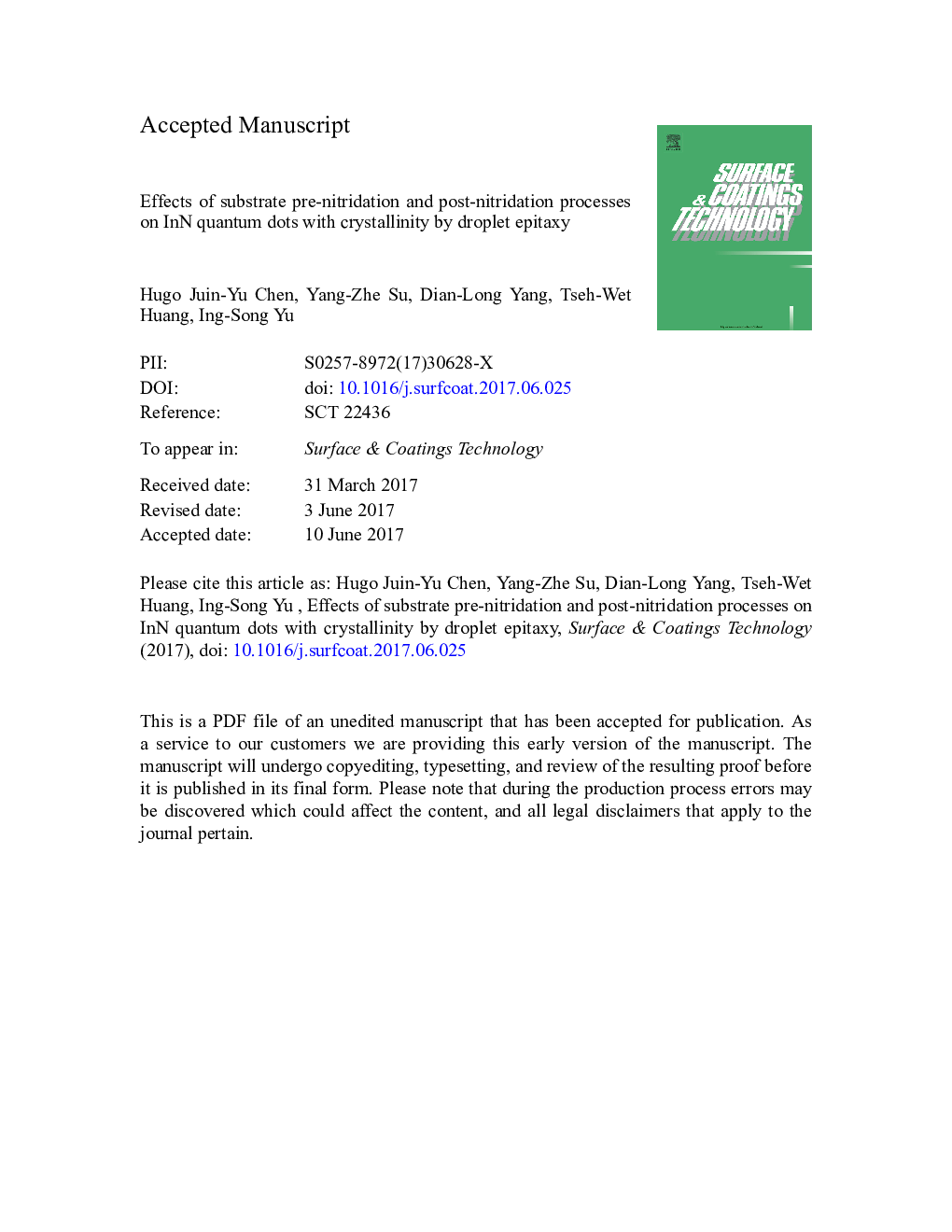| Article ID | Journal | Published Year | Pages | File Type |
|---|---|---|---|---|
| 5465109 | Surface and Coatings Technology | 2017 | 14 Pages |
Abstract
For the growth of InN quantum dots by plasma-assisted molecular beam epitaxy (PA-MBE) via droplet epitaxy technique, the effects of nitridations processes (pre-nitridation on Si (111) substrate and post-nitridation to form InN quantum dots) have been discussed in this report. Pre-nitridation and post-nitridation processes cause lots of impact to the growth mechanism of InN quantum dots. Reflected-high energy electron diffraction (RHEED) analysis can show us the in situ surface condition and assist us to observe the formation of InN quantum dots during the epitaxy. The surface conditions of Si can be modified by the substrate pre-nitridation process, the nitrogen-terminal surface could influence the sticking coefficient and surface diffusion of indium atoms. InN quantum dots with pre-nitridation process grown at temperature 450 °C have relatively high dots density, broad size distribution, and shape in some preferred orientation. Meanwhile, the post-nitridation process of droplet epitaxy can reduce the dots density due to desorption, surface diffusion and aggregation phenomena. Finally, high-resolution transmission electron microscopy (HRTEM) provides the crystallinity of InN quantum dots, which is consistent with the result using RHEED. The InN quantum dots are crystallized as wurtzite structure with the lattice constant of 0.572 nm. The performance of quantum dots has been investigated by photoluminescence spectra with a peak at 1530 nm and a broad-peak around 1130 nm.
Keywords
Related Topics
Physical Sciences and Engineering
Materials Science
Nanotechnology
Authors
Hugo Juin-Yu Chen, Yang-Zhe Su, Dian-Long Yang, Tseh-Wet Huang, Ing-Song Yu,
